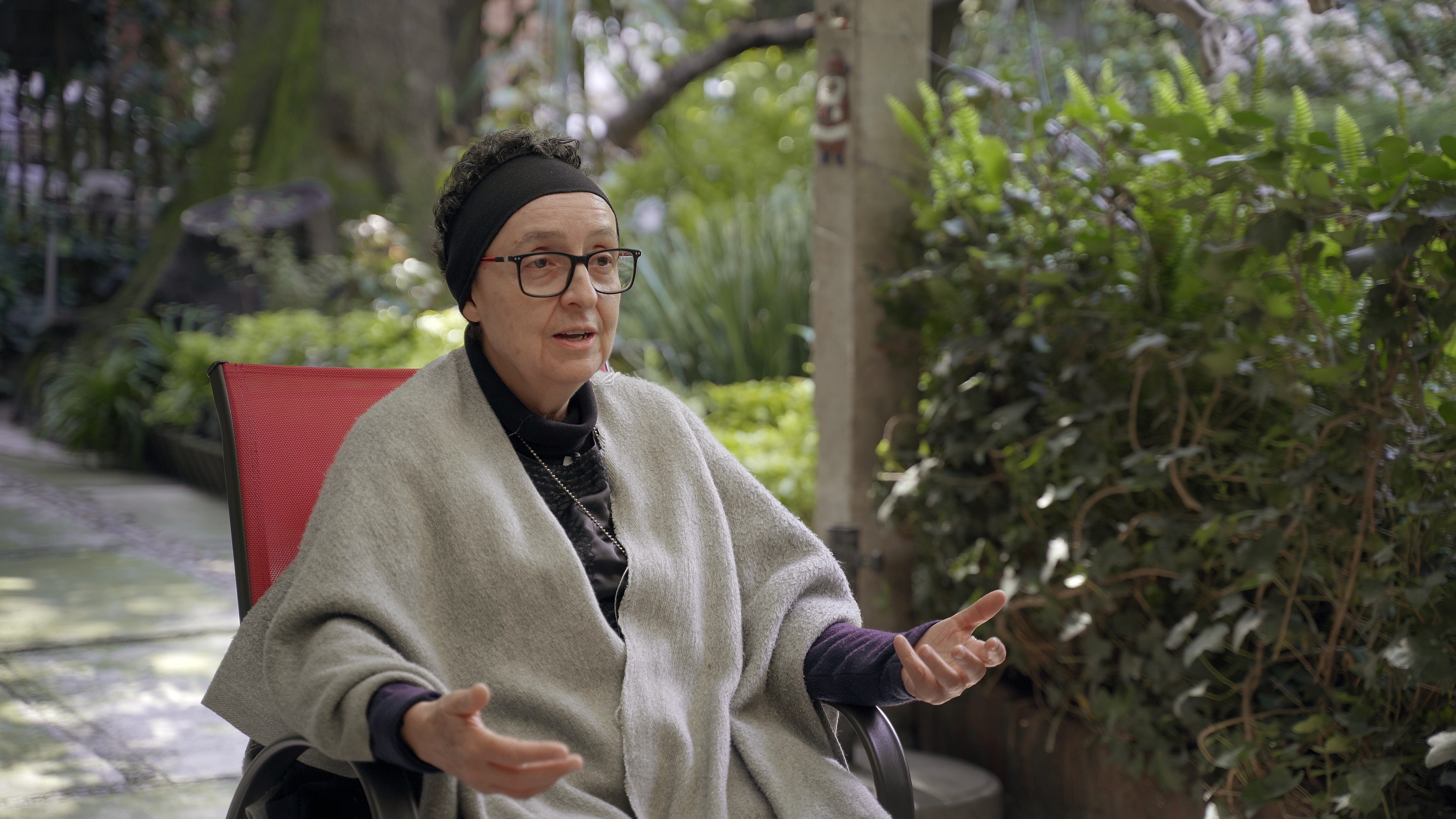The huemul is a slight and sensitive beastie...
What if We Think (about Ourselves) Together?
05/04/2022
Dialoguing with her texts implies going through fundamental issues to think ourselves, individually and collectively, about the role of women; the ethical and political position of teachers; the implications of valuing the land, the local and the indigenous; immigration; the importance of childhood [...] Such matters also allow us to reflect on the slow pace of cultural changes.
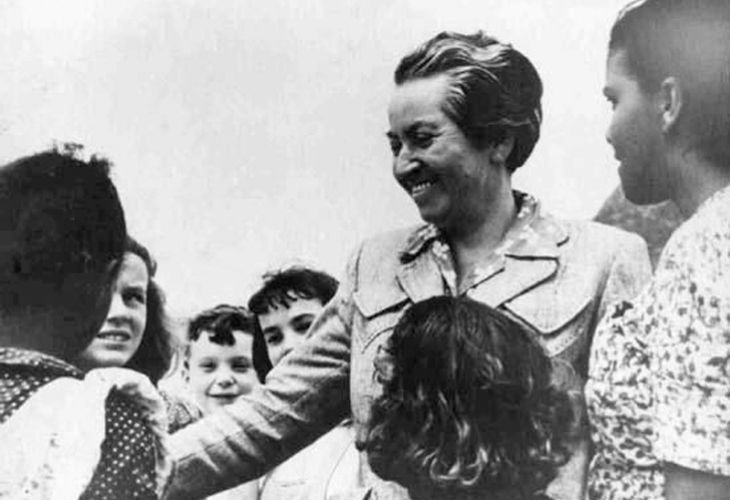
«Transmitting, without noticing, the most transcendent meaning of humanity in the classroom. Thus, education becomes a true imaginative, transformative, and existential communication».
A Meeting with Gabriela Mistral in Art and Education
How to approach Mistral's oeuvre today? What to highlight about a woman who devoted her life to education and obtained the most prestigious international awards for her writing? She was much more than that: in her personal life, she broke many stereotypes for her time and lived her life to the fullest. She was an independent, intellectual, childless woman — which are aspects that did not conform to the role of women at that time. In addition to this, she traveled constantly, due to her diplomatic positions in consulates and embassies — a political arena destined mainly for men. She was also outspoken about her mestiza condition, in a context that extolled the European culture. And last but not least, there is her open sexual inclination, which she always kept silent.
What to highlight about her and how to read her in the present? Dialoguing with her texts implies going through fundamental issues to think ourselves, individually and collectively, about the role of women; the ethical and political position of teachers; the implications of valuing the land, the local and the indigenous; immigration; the importance of childhood, among many others. The range of issues that Mistral addressed more than a century ago is still pressing, proving she was a woman who was attentive to the reality she was living. Such matters also allow us to reflect on the slow pace of cultural changes and how issues that were addressed more than a century ago are still thought of as innovative. So, how does her vision approach the crossings of art and education, and what views does it open for us?
The initial intention is to get acquainted with her writings, understanding this dialogue as an act of transmission, an encounter between generations. To this end, I picked some of the main ideas in her educational thinking and I propose to open a conversation focused on the present.
The first concept I would like to revisit is that of imagination. Mistral considered it the basis for intelligence and sensibility while being very critical of those teachers who do not provide the space for it to emerge. She proposed that reading could be enriched by appropriating the texts, changing fragments, and imagining alternative endings. She also believed in the importance of envisioning stories and having them drawn. In general, we see an emphasis on fostering an exploratory and investigative attitude, emphasizing the creation of spaces of trust and spontaneity for the imagination to express itself. This approach reveals her closeness to art. Regarding education, she considered the process of creating a class to be similar to making a work of art. "When I have prepared a beautiful class, I am happier than Michelangelo after his Moses" (Mistral, 1979, p.273),1 she declared, evidencing the importance she gave to the creative act of a class and hinting at the current discussion regarding the potential of artworks in education and vice versa.
This view comes from the practice itself, her own experience as an educator and an artist. Gabriela explicitly insists on the need for educators to cultivate other interests parallel to their pedagogical training, since this enriches their educational work and turns them into comprehensive persons, an essential quality for those who teach.
On the other hand, as early as 1927, she comments on the relevance of images in education, referring to illustration and cinema: "...images, not words, that is what remains. But if one reads [...] turning the reading into imagery, it is assimilated and will never be completely lost" (Mistral, 1927, p. 201). About the way to approach certain topics (in this case, zoology), she explains: "First, we must provide pictures, as many as possible [...] Over the picture, I would lay out the adventure and the story [...] only after this double image of the beast, the engraved and the oral one, would I go into the technical description" (Mistral G. 1927. p.59).2 It is an interesting sequence she proposes, setting out from a more intuitive and pleasurable approach: from the image.
We might presume that today, she would be attentive to memes and the potential of video games in education — I wonder if contemporary educators are paying attention to this. Recognizing this legacy, thinking about it, and looking toward a critical review of what the image implies in our contexts is an essential task of art education, where the frictions between art and education make sense. Beyond the value she gives to images, also her contemporary vision — that is, her critical and attentive gaze on her time — stands out.
In her writings and biography, we notice the concepts of autonomy and self-education,3 which were transgressive actions for her time and which also circulate in the current discussions on education. Already in 1919, she wrote an article titled “Métodos activos de instrucción” [Active Methods of Teaching] where she affirms: "the teacher should never do what the child can do by himself" (p. 52). She proposed an education outside the classroom, linked to the land, facing real problems; taking the classroom to the courtyard, working in the garden. She had such a sense of belonging to a territory that she carried with her a bag of soil from the north (her place of birth). When we position ourselves in the field of art and education, we can identify these issues in contemporary lines of thought and authors, and they continue to be a challenge for public education in Chile.
This is the case of the so-called context art within artistic practices or situated learning in the pedagogical field. We also find it in Silvia Cusicanqui (2018),4 when she proposes learning in the squares, on roads, in markets, and the importance of approaching knowledge from practice and constant questioning in the face of reality. Both point to the need to avoid transferring foreign models and building local proposals instead. These issues intersect with the value given to indigenous peoples, where we could find new possibilities to be among ourselves, to build a community. In this sense, it is worth mentioning Mistral's statements in defense of the indigenous and her broad criticism towards the mestizos who deny their indigenous heritage while praising their European origin: "The Indian is not outside us: we ate him and we carry him inside. And there is nothing more naïve, nothing more trivial, and nothing more astounding than to hear the mestizo speak of the Indian as if he was talking about a stranger" (Mistral, 1938).5 She emphasizes the rhythms and times, as well as the qualities of patience and humbleness in the face of life. In addition, she recovers the closeness to nature. She not only raises this issue in theory but also lives and expresses it in her pedagogical thought: "During my seven years of teaching in the Andes, I always taught outdoors, under one of the school's vine arbors (...) At the beginning, I faced mockery (...) After ten days, the discipline was the same as in the classroom" (Mistral, 1922, 114).6
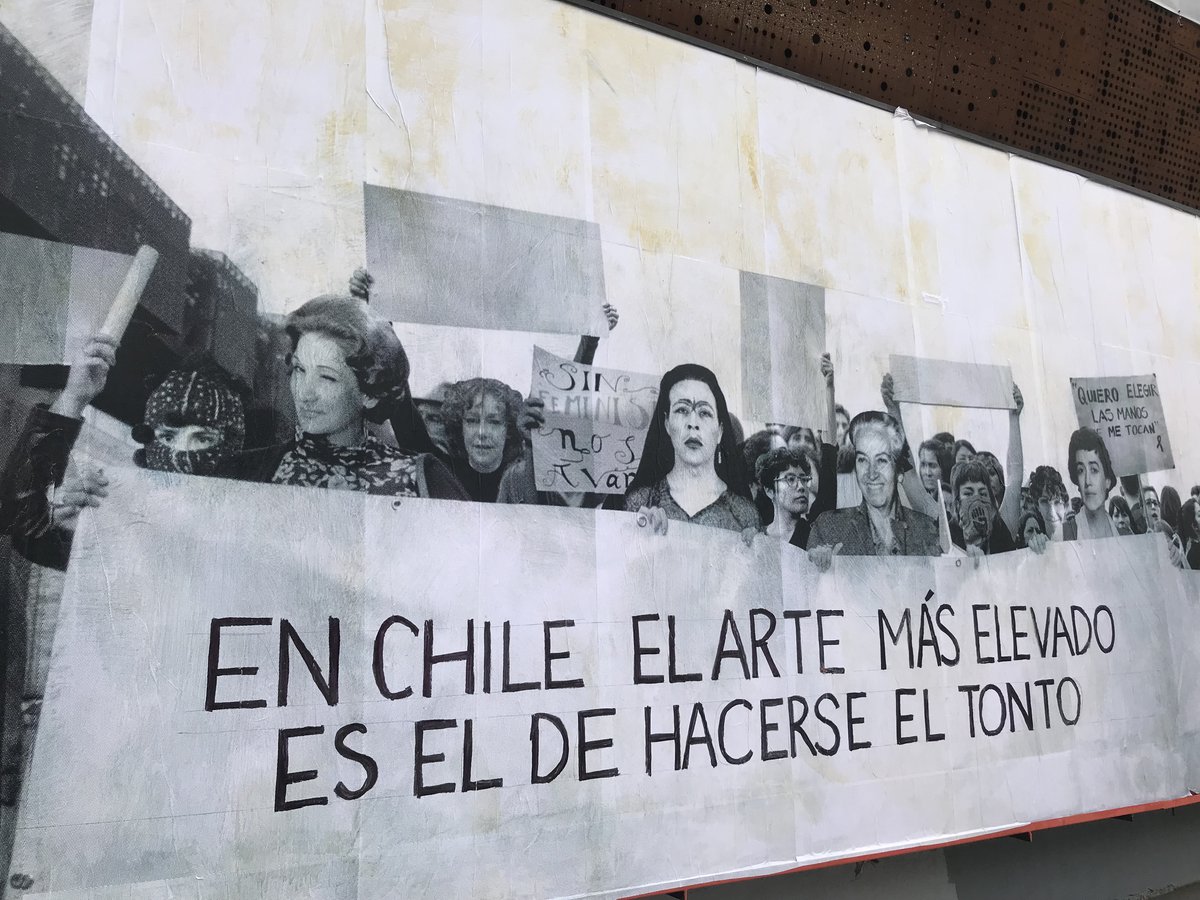
Contextual Readings: Gabriela Mistral in Today's Chile
Gathering the ideas raised so far, I would like to turn the attention to the current Chilean context, to dialogue with Gabriela Mistral through some of the images that emerged during the social outburst of October 2019.7 Chile is going through a period marked by a long-standing political and social crisis. Massive social mobilizations have been happening since 2006, driven mainly by the student movement (starting with those organized by high school students, the so-called “penguins”),8 who demanded structural changes to the ruling social and political model, established during the military dictatorship and sustained over time. These protests gradually expanded their reach to involve a larger part of society, reaching the highest level of citizen participation since the return of democracy.
The consequences were extremely grave, such as the human rights violations perpetrated by the Chilean State. However, they also brought encouraging signs, such as the constituent process underway, or the first parity convention, with seats reserved for native peoples and presided by a Mapuche woman. "We have lost so much that we have lost our fear" was an oft-repeated phrase during the demonstrations, which shows a generational shift and an irreversible turning point, leaving behind a repressive past with little real participation from the majority. This allows us to imagine a new framework for life in common from a different paradigm.
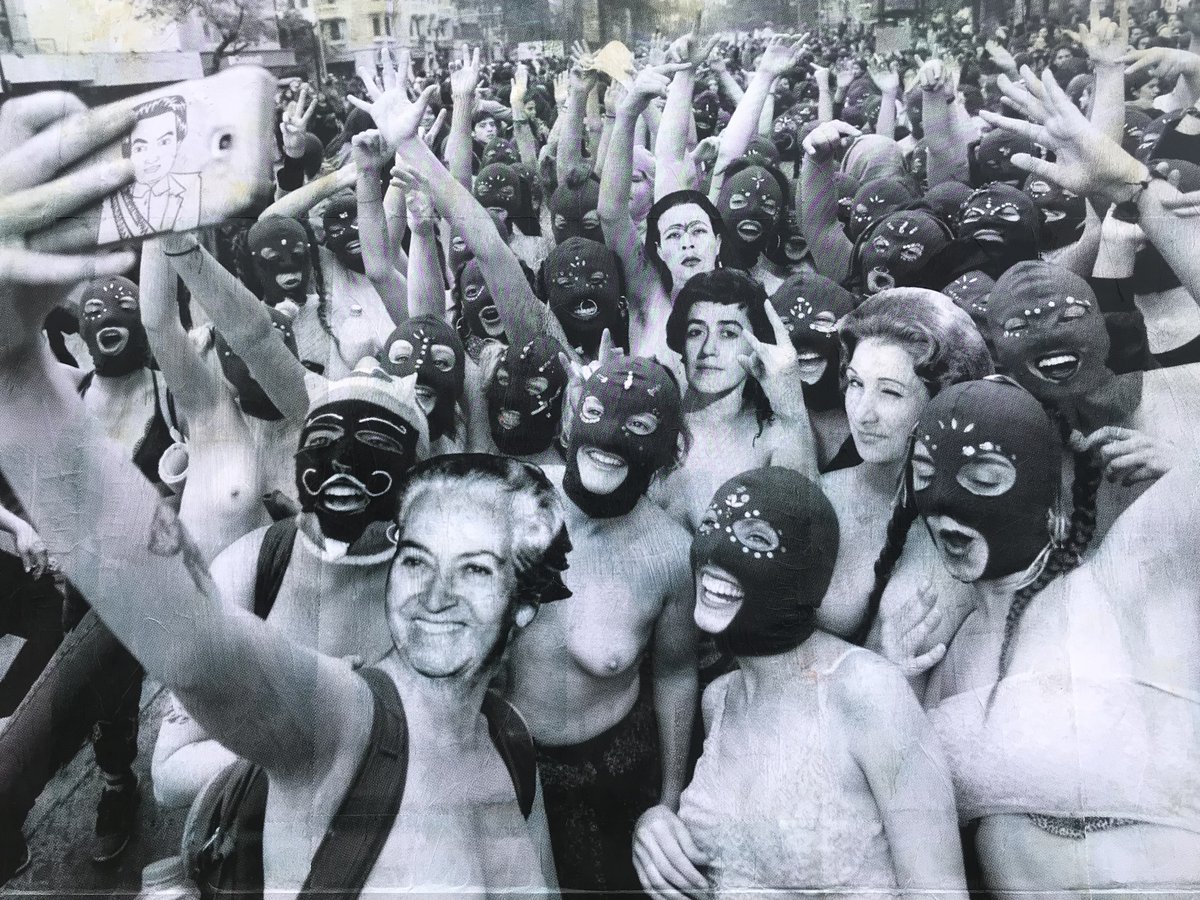
In this sense, I return to the ideas of Gabriela Mistral: "Freedom is simply a function as vital as breathing..." (1979, p. 198). "Liberty pleases the child more than eating and drinking" (p.55). She constantly emphasized the importance of children’s participation: "children (...) arrive at school bringing their own mythology (...) We would have to listen to them first and see how to use this little treasure (...) and open up their confidence with it" (1925, p.31).9 Such ideas show the relevance of the voice of the children and of building together with them, as well as the trust needed for this voice to emerge.
I connect these notions to the images proposed by the artist Fab Ciraolo on the facade of the Centre Gabriela Mistral (GAM)10 and his photomontage, digitally placed in Plaza Italia (renamed as Plaza Dignidad during the riots), the beating heart of the protests in Santiago, in October 2019. The image subverts the figure of military hero Manuel Baquedano for that of an empowered and liberated Gabriela Mistral waving a black flag of Chile,11 and incorporates her phrase: "The future of children is always today. Tomorrow will be too late."
This image portrays much better who she really was, in contrast to the imagery that has been built around her in Chile over time, linked to a motherly figure and poetess of children. Ciraolo’s gesture, in turn, brings forward two social groups that have never been part of power spaces in official history: women and children. A transgressive imaginary, recurrent in the social revolt where art has played a main role.
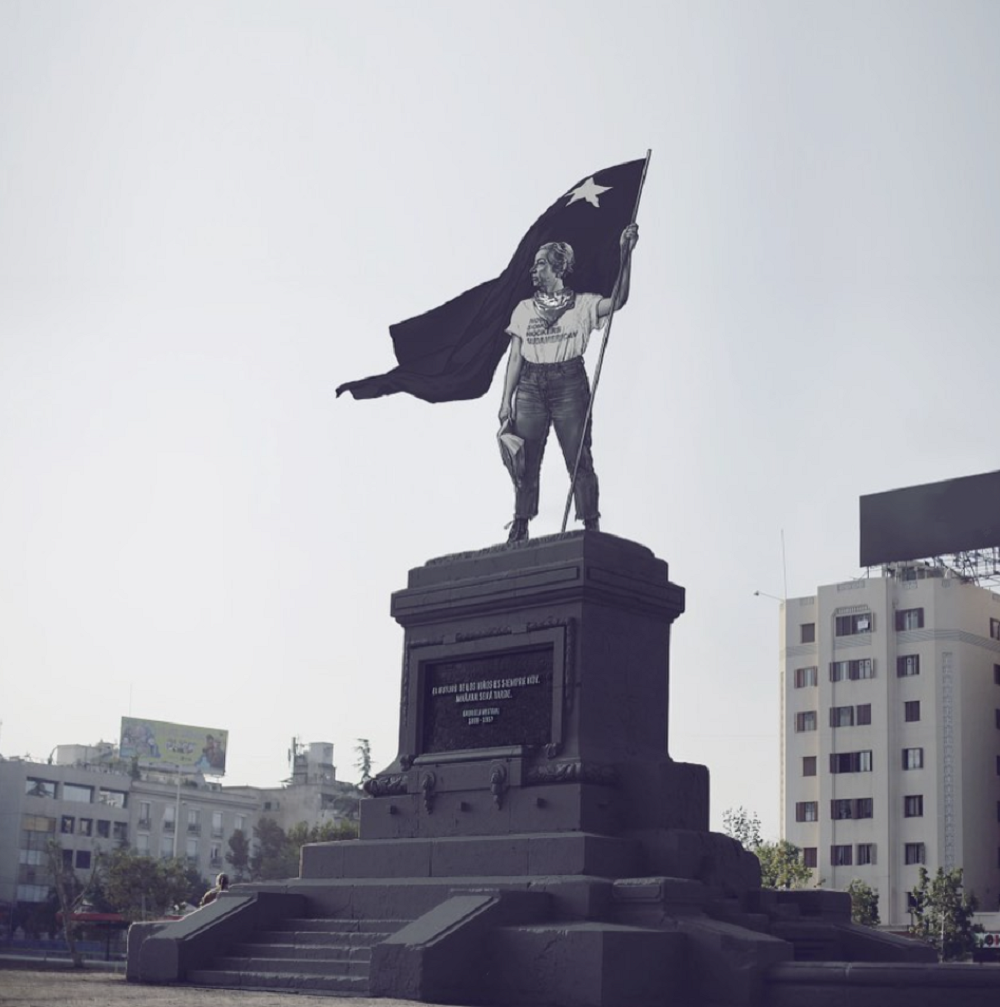
I find it interesting to understand this proposal as an act of transmission, in the educational sense of a "...device that enables, that opens possibilities for that old thing to be appropriated, to be transferred, to be re-read (...) and updated by those who follow" (Nuñez, 2017).12 Thus, the image of Gabriela Mistral revisited in this context offers a possible answer to the question posed by the historian Sánchez (2020): "What is the history that was being written in Chile?"13 Perhaps a new one, grounded in the past represented in her figure, while offering a hybrid language that accounts for a cultural change that does not erase and does not omit, but reviews and retakes. Unlike the actions of the Government, covering up the expressive gestures of the citizens over and over again.
This symbolic replacement of Baquedano for Mistral stirs the memory of the words in the text “Menos cóndor y más huemul”14 [Less Condor and More Huemul] (Mistral, 1925).15 So, I will take the liberty of rehearsing a dialogue:
What is a slight and sensitive education today? Is it possible to find in art some of this slightness to generate a sensitive dialogue with education?
...it is related to the gazelle, which is to be related to perfection. Its strength lies in its agility.
How can we project such agility into our classrooms? Is it possible to understand strength from another place, associating that agility with wits and motivation rather than with the force of rules and authoritarianism?
He, like the deer, often saves itself without combat, with intelligence, which becomes a tad ineffable to him.
Does this intelligence move away from competition and towards collaboration? Could it be an intelligence similar to an intergenerational encounter built as an act of transmission? Is there space for affection and listening therein?
It is guarded by the fineness of its senses: the delicate ear, the attentive watery eyes, its acute sense of smell.
What would an education conceived with fine senses be like? What would our bodies be like if we had sharpened our sense of smell in tandem with our sight and our rational capacity? What if we set out to imagine an educational space that emphasized this fineness, engaging the whole body in its full potential, and where art could strengthen this process? What would become of our classrooms, the teacher-student relationships, and the new society we want to build? What would that be like?
The huemul speaks for the sensibility of a race: fine senses, grace, a vigilant mind. And all that is defense, invisible yet effective spurs of the Spirit.
Could it be possible to find more often a sensibility such as that of the huemul in our educational spaces? What can art contribute to this?
Better is the excited eye that observes from behind the reeds, than the sanguine eye that dominates from above only.
Final Notes
In a final reading, it is worth asking: what elements does this new imaginary bring to light? What does this Baquedano-Mistral switch imply? In response to this, I bring up the words of Françoise Collin, who proposes: "If feminism is not limited to being a purely political theory and action, but also claims to be a space of thought concerned with the totality of the experience, it must make room in its capitalization work for that which cannot be capitalized" (2006, p.127).16 These words contain two main ideas of what this meeting with Gabriela seems to imply as an act of transmission. The first is feminism as a paradigm shift, as a new logic of thought. The second is what "cannot be capitalized," which according to Mistral is also something inherent to a class: "My class has indeed vanished like a cloudscape, but it is only in appearance. My class remains as a golden arrow pierced in the soul of at least one student. In her life, my class will be heard again, I know it" (1979, p. 273).
In that sense, I propose to think of educational spaces enveloped by the mystery of art, by that which cannot be capitalized, moving around the multiple languages of the unspeakable, anchored in experience, rather than purely in theory or norm. As an act of transmission, as a space of intergenerational bonds which approaches the huemul in its fineness and subtlety. An encounter between the present and the past, where questions arise allowing us to think of ourselves today with the weight, depth, and support of the past. A space to think about ourselves in a network, a weave of women — in this case — who have come before us, with whom to dialogue and build new questions, open up areas of critical thinking, and imagine answers at the intersections of art and education. An act of transmission that implies transforming and being transformed through it.
Education together with art, as Gabriela suggests from her experience as a teacher and a writer, can be a way of building possible worlds, a space to learn together, and not just a functional piece of machinery for the ruling system. It is an invitation to revisit our past through women and men who have been able to break the fence, to look a little beyond their comfort zones. Today, they allow us to rethink the present in good company,17 like a thread in an endless web of transgressive and hopeful gazes, of people acting from praxis itself with theory in hand.
